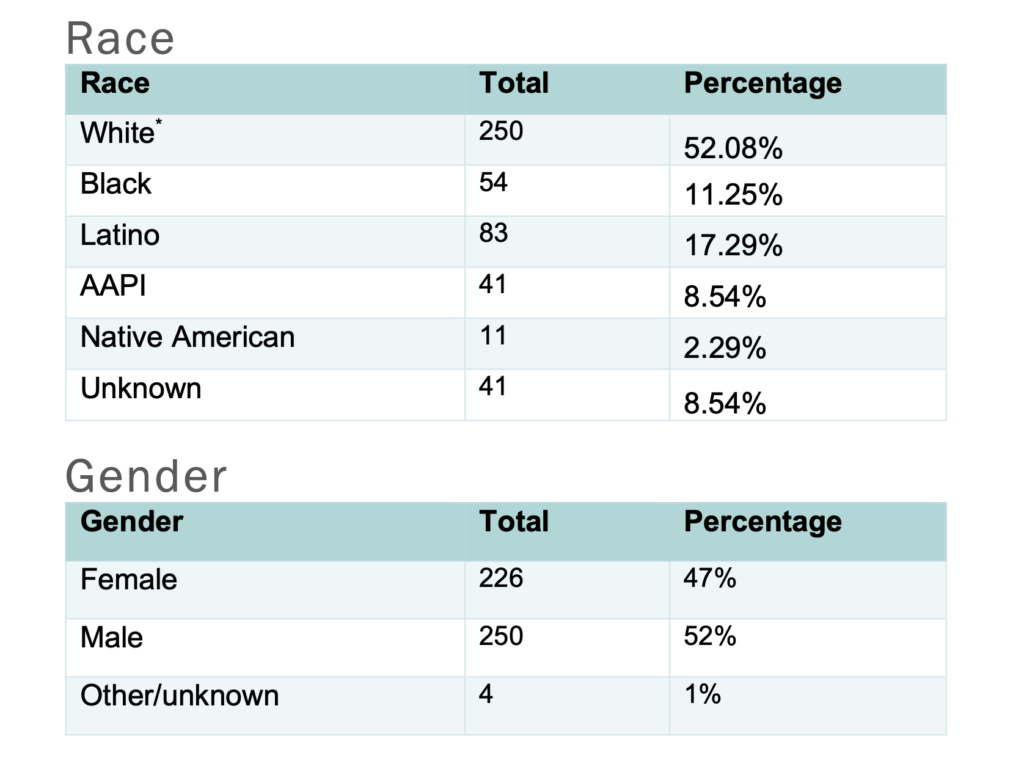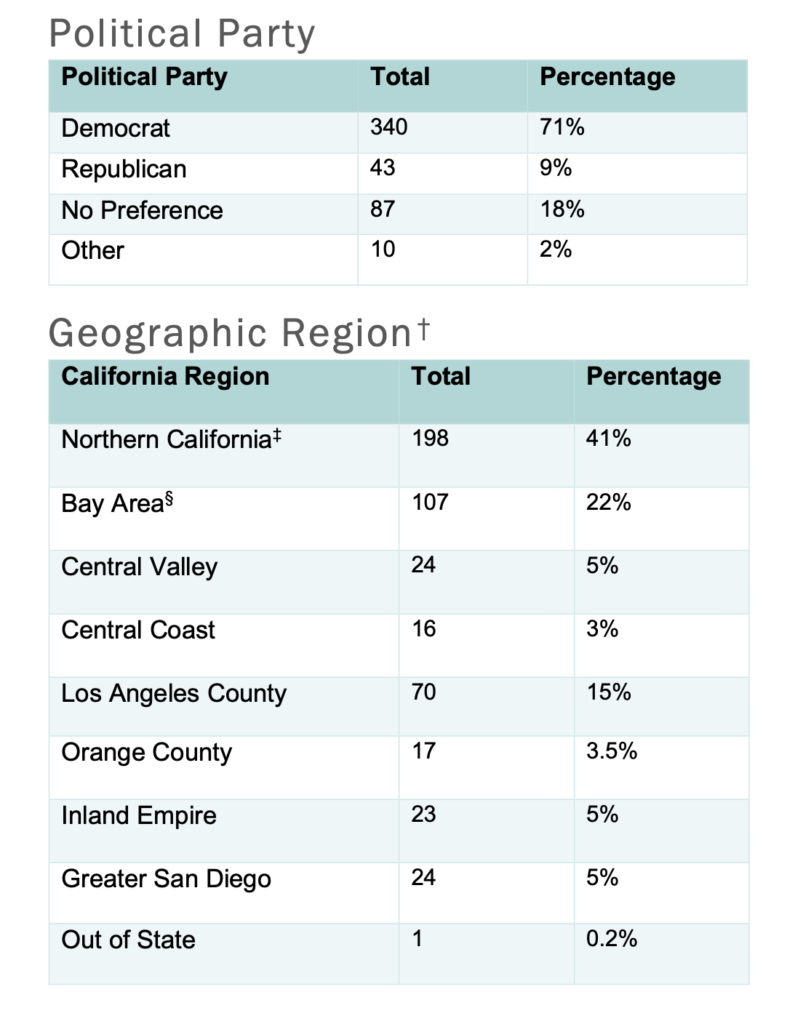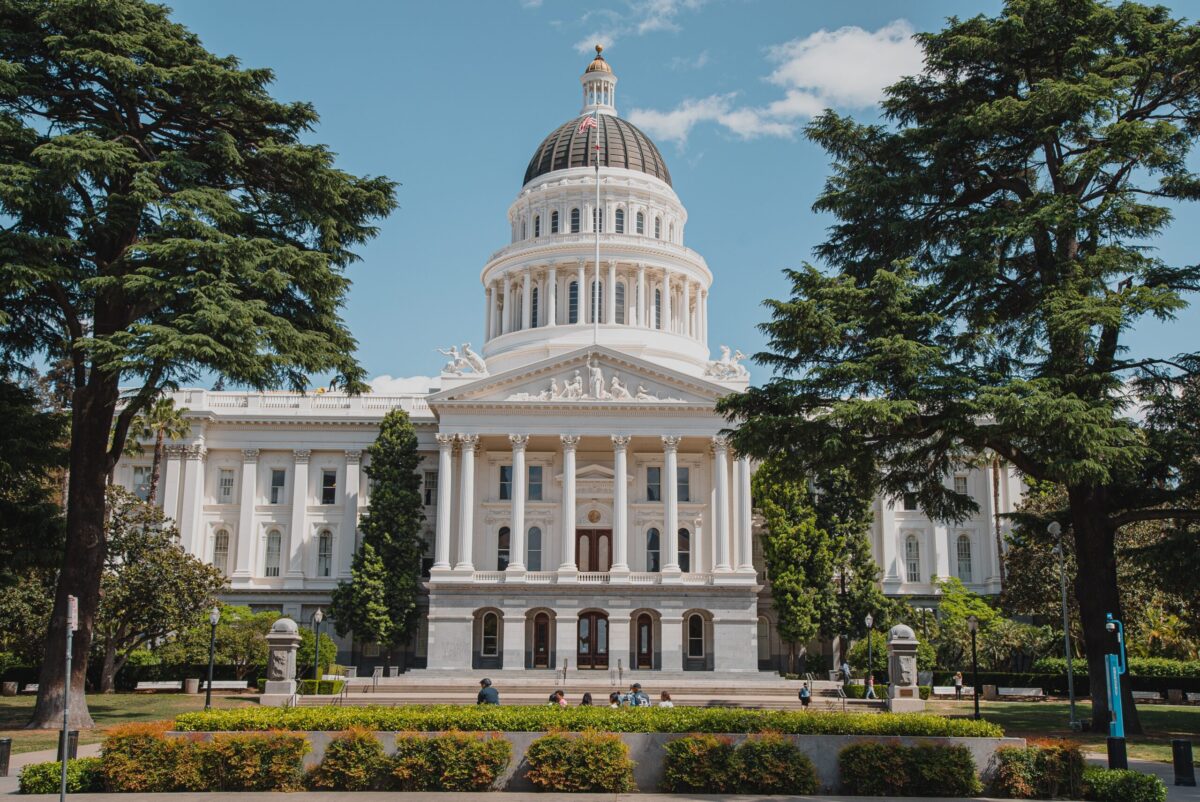SACRAMENTO, CA — A new report finds that, while Gov. Gavin Newsom has achieved gender parity in his office’s appointments, Latinos and AAPI remain underrepresented.
The report was released Monday by the nonprofit Hispanas Organised for Political Equality (HOPE), in response to a veto last October of SB702, the third iteration of a bill by Senator Monique Limón (D-19) which would require the Governor to create and publish an annual report on “aggregate demographic information” of appointments made to the state’s 420 boards, agencies, commissions and task forces.
Key findings
The report found that “the rich diversity of California’s population is not reflected in the demographic makeup of board members and commissioners appointed in 2023,” per publicly available self-reported data for 480 candidates appointed from January 2023 through December 15, 2023.
Non-Hispanic White Californians hold the majority of appointments at 52%. Latinos (17.29%), Black (11.25%), AAPI (8.54%) and Native American Californians (2.29%) collectively make up 39%, with 9% being unknown.
For comparison, the demographic breakdown of California is 34.7% Non-Hispanic White, 40.3% Hispanic or Latino, 6.5% Black, 16.8% AAPI and 1.7% Native American, according to 2023 Census estimates.

47% of appointments are female and 52% are male with 1% falling under the category of other or unknown.
The report combines race and gender to show that White men comprise 30% of appointments, White women 22%, Black men 5%, Black women 6%, Latino men 8.5%, Latina women 9%, AAPI men 3.5%, AAPI women 5%, Native American men 1% and Native American women 1%.
The report also finds that 63% of appointees live in Northern California (41%) and the Bay Area (22%), with Los Angeles County at 15%; the Central Valley, Inland Empire and Greater San Diego area at 5% each; and Orange County and the Central Coast at about 3% each.
Most appointments are Democrats at 71%, with Republicans at 9%, No Preference at 18% and Other at 2%.
Precedents
Limón said Newsom “has been very intentional about ensuring diversity in his appointments” — recently appointing the first Latina Supreme Court Justice for California in 2022 and passing SB54 in 2023, which requires venture capital firms to make demographic diversity reports on the companies they invest in. “The goal of reports like these is to replicate his success.”
“You can’t fix what you cannot see,” she added. When Newsom’s term ends in 2027 “we will have a new governor, and we want to ensure that the gains his administration has seen are gains that can be sustained.”
Newsom’s veto letter for her bill holds that because the demographic information specified in SB702 is self-reported by candidates, a report may not necessarily accurately reflect the diversity of appointees.

However, the HOPE report counters that “our state regularly uses self-reported data for many different state agencies for resources like tax credits, disability insurance, and in the appointment of our judicial courts. We believe this report would be more accurately and efficiently produced if it came directly from the Governor’s office,” i.e. if measures like SB702 were more common. This “would come at nearly no cost to the Administration, given that they already collect this demographic data.”
On the state level, there’s precedent for such a report. The California Judicial Council, for instance, publishes demographic data relative to gender, race, sexual orientation, gender identity, veteran and disability status for court justices and judges, and the report in Limón’s proposed bill also includes these metrics.
Among other states, Illinois under Gov. Pritzker passed a measure similar to SB702 in 2015, and has seen consistently more diverse appointees since.
This emphasis on transparency is also gaining traction among local governments throughout California.
In 2023 the Los Angeles County Board of Supervisors adopted a motion modeled after SB702 requiring the board to publish an annual demographic report of appointments. The Santa Cruz County Board of Supervisors adopted a similar measure in 2021. Karen Bass, mayor of the City of Los Angeles, also aims to create a similar report.
Next steps
HOPE has stated that it will continue tracking appointments in 2024.
In light of the 2023 report’s findings, Sen. Limón has reintroduced her bill requiring an annual demographic report on gubernatorial appointees, in the form of SB782, which is set for a hearing on January 11.
After three past vetoes, “It will be our fourth attempt on this particular bill,” said Limón. “What we have seen over the last four years is that this is not a partisan issue, evidenced by the strong bipartisan support that this bill has received — particularly in the last year in the legislature.”
If Californian leadership does not “evaluate our progress, gaps in representation will continue to exist,” she added. “This report reiterates the need for demographic data to be made publicly available. The work to advance transparency must start in-house.”




